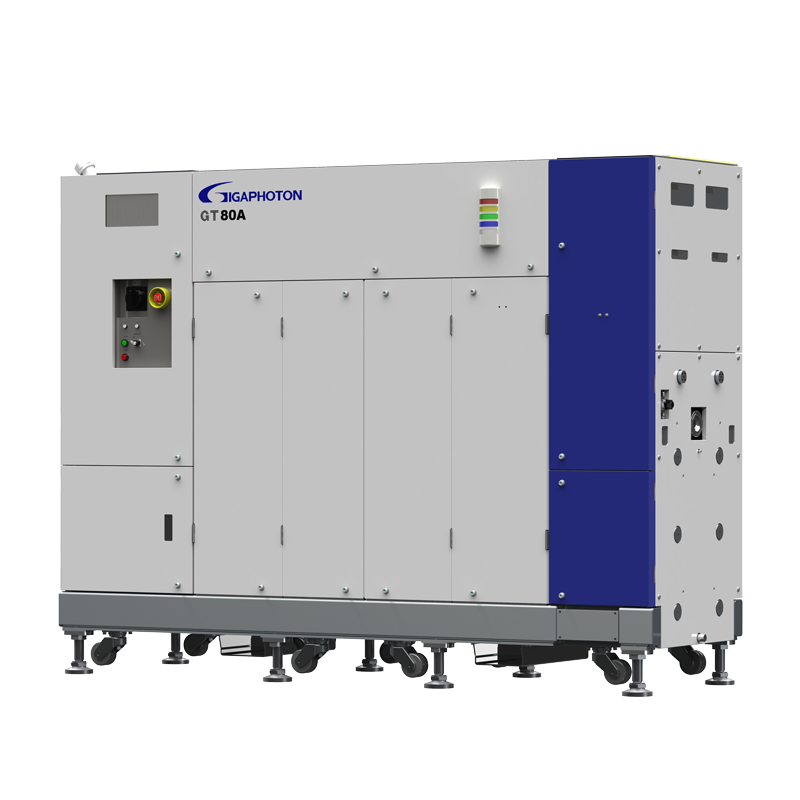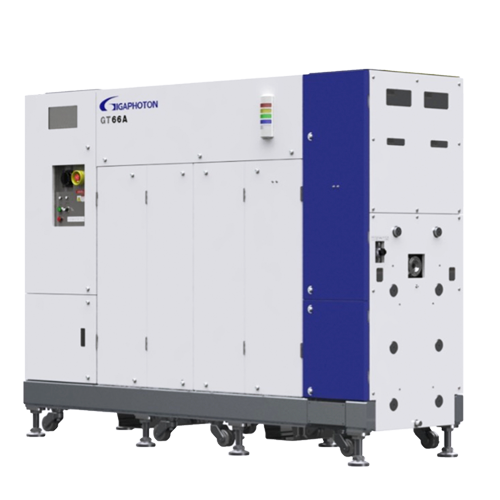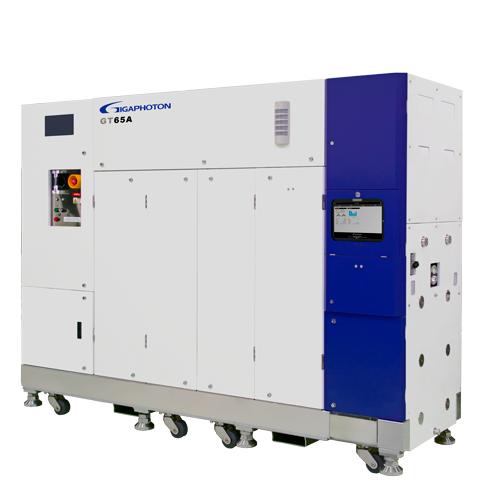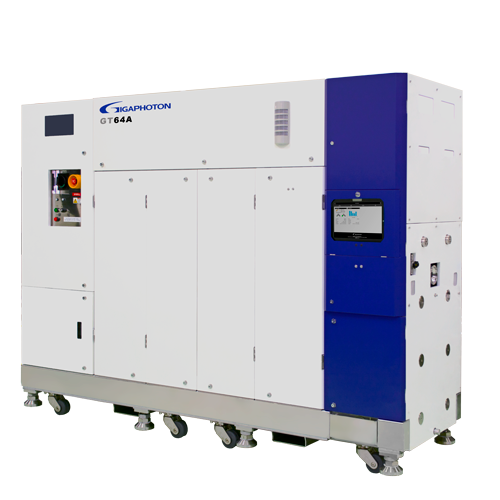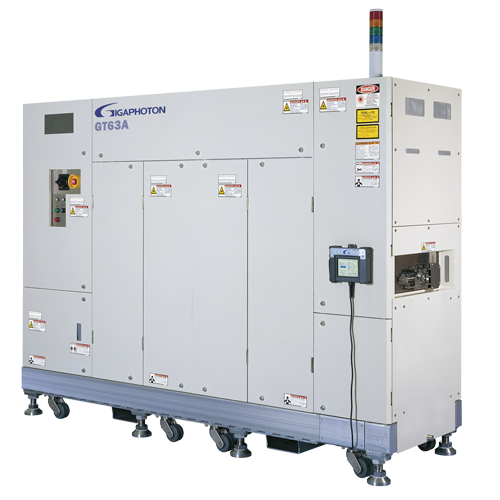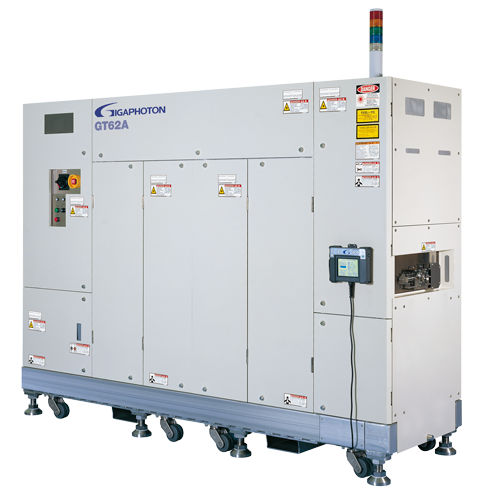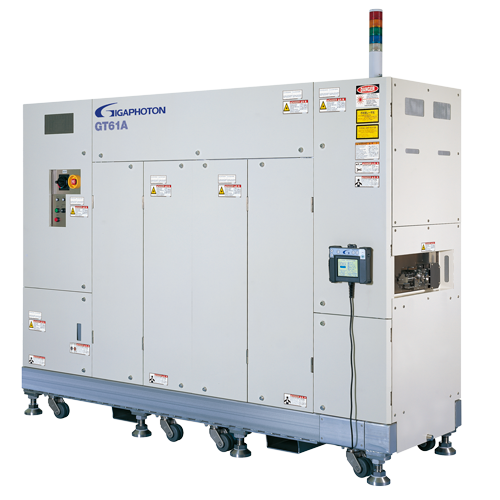6New 6 kHz Excimer Laser Model for 45-nm or below Technology Node
Marking less than one year since the company began mass-production and shipment of the GT40A, Gigaphoton has now successfully developed the GT60A, delivering an improved repetition rate 1.5-times that of the GT40A. The GT60A is the latest-generation model, featuring the same injection-locking platform as that used by the GT40A, which has already been accepted by major users in the global semiconductor industry. The design concept and reliability of the GT40A are highly acclaimed in the industry, and because the GT60A is based on the same platform to maximize standardization as well as enable the use of common components, thereby ensuring users to achieve high reliability right from the onset.
Key Features
High Output and High Repetition Rate
Improving on the GT40A, which achieved a repetition rate of 4,000 Hz, the GT60A reaches a repetition rate of 6,000 Hz on the same platform through greatly enhanced efficiency. This improvement enables an output level of that is more than 33% higher than the GT40A, while limiting the energy per pulse. While the GT60A features output and repetition frequency enhancements, the laser’s spectral performance supports the resolution of lithography tools at the same level as the GT40A.
High Reliability and High Stability
The GT60A leverages the same platform as that of the GT40A—maximizing standardization as well as enabling the use of common components for ensuring high reliability. In addition to its advanced self-diagnostic function, the GT60A features a variety of functions to enhance system availability. One of the major advantages of the GT series is the ease of module replacement and serviceability, which ensures the high reliability and high uptime essential in today’s semiconductor fabs.
General Specifications
| Item | Value* |
|---|---|
| Wavelength | 193 nm |
| Average Output | 60 W |
| Pulse Energy | 10.0 mJ |
| Repetition Rate | 6,000 Hz |
| Bandwidth (FWHM) | 0.2 pm |
| Bandwidth (E95) | 0.5 pm |
